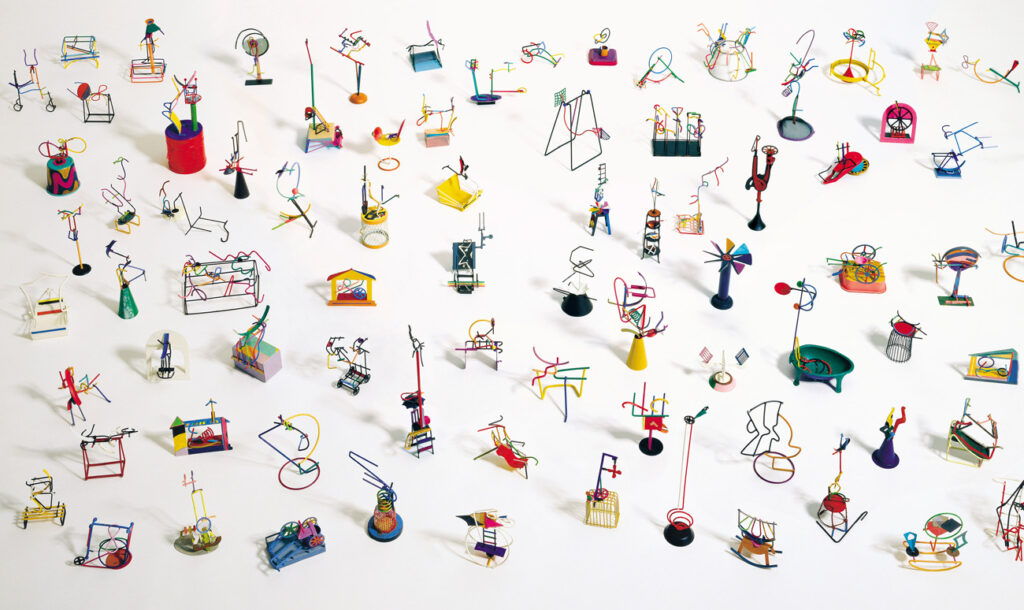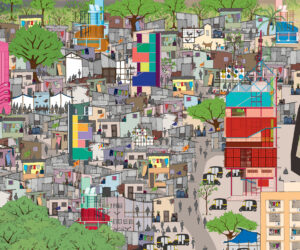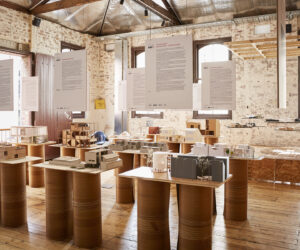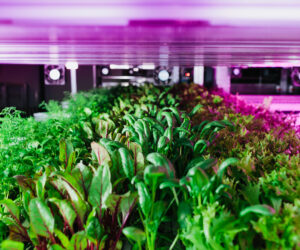ASSEMBLED: The Art of Robert Klippel
ASSEMBLED: The Art of Robert Klippel at TarraWarra Museum of Art, 23 November 2019 – 16 February 2020, will present more than one hundred works by one of Australia’s most significant twentieth century sculptors, Robert Klippel (1920–2001), the tireless inventor who experimented with diverse materials, techniques and dramatic variations in scale.
Klippel is regarded as a giant of Australian art, having associated with Henry Moore, Eduardo Paolozzi and André Breton in the late 1940s, and during his time in New York in the 1950s was a member of ‘The Club’, the highly influential artist group founded by Willem de Kooning and Jackson Pollock.
Curated by Kirsty Grant, the exhibition will highlight three major aspects of Klippel’s work; the Surrealist-inspired sculptures and drawings made in London and Paris during the late 1940s, the ‘assemblage’ works including the so-called ‘junk sculptures’ of the 1960s and 70s, and the late timber works that used often brightly coloured machine pattern parts.
Grant says a highlight of the exhibition is the focus on assemblage, the sculptural technique that Klippel so firmly made his own utilising diverse mechanical components from cash registers, computers and other discarded machines, and later wooden pattern parts, to create a cohesive abstract whole.
“ASSEMBLED will feature a substantial collection of sculptures borrowed from private collections and major public institutions including the National Gallery of Australia, Art Gallery of New South Wales and National Gallery of Victoria. Displayed alongside his lesser known works on paper, they trace the development of his innovative and utterly unique creative approach.”
“Klippel was driven by a dual fascination with the organic and the mechanical. Seeking to find what he described as the ‘interrelationship between the cogwheel and the bud’, he drew upon a deep understanding of nature and the man-made world of machines to develop a distinctive three-dimensional language. Utilising this personal vocabulary of form and shape, he worked intuitively, combining rhythm, movement, weight, volume, proportion, tension, balance and texture in a dynamic dialogue to create a unique body of abstract sculpture,” Ms Grant said.
In his home studio at Birchgrove, overlooking Sydney Harbour, Klippel established individual rooms dedicated to drawing, welding, woodwork and so on, each space providing clarity of focus within an interconnected creative whole.
Klippel’s major statement using junk metal, No. 247 Metal construction, comprises thousands of found typewriter parts, and was created over a period of three years between 1965-68. Regarded as a masterpiece within Klippel’s oeuvre and within twentieth century Australian sculpture, it brilliantly displays his ability to convey a sense of the natural world using materials that are entirely man-made.
One of Klippel’s largest works, No. 712 The train 1987 is composed of a series of sculptural elements made up of timber patterns which were used in the nineteenth and early twentieth centuries as moulds for casting metal machine parts. Klippel and fellow-artist Colin Lanceley discovered a cache of discarded patterns in Sydney in the 1960s, but it wasn’t until two decades later that he began working with them, responding to their varied shapes and solidity of form, as well as their colour (typically red, yellow and black) and textural surfaces.
Consisting of more than eighty small sculptures, No.1118 1995 exemplifies the constant experimentation and innovation that characterised Klippel’s practice. Working with an array of everyday materials including champagne bottle caps and wires, plastic toys and tea strainers, he assembled a field of tiny forms, none of which measure more than fifteen centimetres in height, painting each element in bright colours, so that it appears like a miniature adventure playground.
Victoria Lynn, TarraWarra Museum of Art Director, said “TarraWarra Museum of Art holds several key works by Robert Klippel and a key curatorial platform is to provide opportunities to show our collection in a national context. With this exhibition, we can appreciate a full survey of the artists’ inventive, imaginative and playful oeuvre that continues to be relevant to sculptural practice today. Whilst Robert Klippel’s work is well-known in his home-town of Sydney, this will be the first major exhibition to display this breadth of his work in Melbourne since the late 1980s.”
ASSEMBLED: The Art of Robert Klippel is only possible thanks to the generous support of major exhibition partner, The Balnaves Foundation, whose ongoing partnership has enabled TarraWarra Museum of Art to present ambitious summer exhibitions over the past three years.
Neil Balnaves AO, Founder, The Balnaves Foundation said, “The exhibition ASSEMBLED: The Art of Robert Klippel will be the fifth year that The Balnaves Foundation has supported TarraWarra Museum of Art to deliver exhibitions of note by Australian artists. The foundation is proud to partner in these major endeavours, providing vital opportunities for important Australian artists to be showcased, whilst providing a broad range of audiences access to outstanding arts experiences.”



